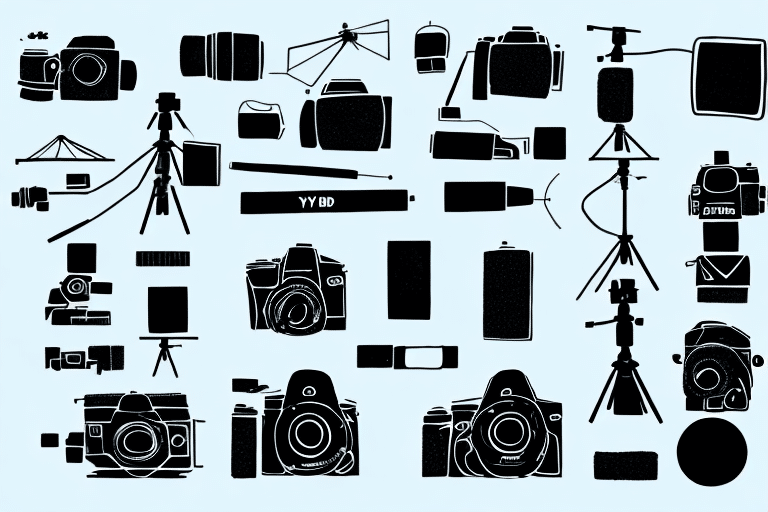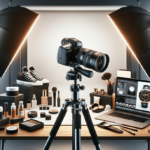Product Photography 101: A Comprehensive Guide to Taking Professional-Quality Photos
In today's digital age, having high-quality product photography is more important than ever. Professional-quality product photography can make all the difference when it comes to selling your products online. In fact, according to a recent study by Statista, 75% of consumers say that product photos greatly influence their purchasing decisions. So, if you want to take your product photography to the next level, this comprehensive guide is for you. Here, we'll cover everything from understanding the basic concepts of product photography to editing techniques that will make your photos stand out.
Why Professional-Quality Product Photography Matters
At its core, product photography is all about making your products look as appealing as possible to potential customers. Whether you're selling items on your website or listing them on a reputable e-commerce platform, your product photos are often the first thing that customers see. In other words, your product photos are your first impression. As the old saying goes, you only get one chance to make a first impression. So, if your product photos are poorly lit, inconsistent, or just not visually appealing, customers are likely to move on to another seller. With professional-quality product photography, however, you'll be able to capture the attention of potential customers and keep them engaged with your brand.
Equipment Essentials
Choosing the Right Camera for Product Photography
When it comes to taking professional-quality product photos, having the right camera is essential. While you don't necessarily need to spend thousands of dollars on professional-grade gear, you'll want to choose a camera that's capable of producing high-quality images. Ideally, you'll want a camera with a large sensor, which allows you to capture more detail and produce better image quality. Additionally, features like manual exposure control and the ability to shoot in RAW format are crucial for flexibility in post-processing. Popular options for product photography include DSLRs, mirrorless cameras, and certain high-end smartphones.
Essential Lenses and Accessories
In addition to choosing the right camera, investing in the right lenses and accessories can elevate your product photography. Macro lenses, for example, are perfect for capturing intricate details of small items like jewelry. Other useful accessories include:
- Tripods: Stabilize your camera to ensure sharp images.
- Diffusion Panels and Lightboxes: Soften and diffuse light for a more flattering illumination.
- Remote Shutters: Prevent camera shake during long exposures.
Lighting Techniques
Understanding Lighting Techniques for Product Photography
Lighting is one of the most critical aspects of product photography. Effective lighting can highlight your product's features, textures, and colors, making it more appealing to customers. Key lighting techniques include:
- Soft Lighting: Creates minimal shadows and a flattering look.
- Directional Lighting: Adds depth and dimension by casting shadows strategically.
- Reflective Lighting: Uses reflectors to bounce light and fill in shadows.
Natural vs. Studio Lighting: Which is Right for Your Product?
Choosing between natural and studio lighting depends on your product and the aesthetic you aim to achieve. Natural lighting offers a soft, authentic feel and is ideal for products like clothing and accessories. However, it can be unpredictable and varies with weather and time of day. Studio lighting, on the other hand, provides consistent and controllable light, allowing for more creative control over the look of your photos. Studio setups can range from simple DIY arrangements to more complex professional setups with multiple light sources.
Setting Up Your Studio
Setting Up a DIY Home Studio for Product Photography
Creating a DIY home studio is a cost-effective way to achieve professional-quality product photos. Essential components include:
- Backdrop: Use seamless paper, fabric, or vinyl for a clean background.
- Lighting: Utilize natural light or invest in affordable lighting kits.
- Tripod: Ensures stability and consistency in your shots.
- DIY Diffusers: Create soft lighting using materials like white bedsheets or shower curtains.
Creating an Effective Photography Setup
An effective photography setup ensures that your products are showcased optimally. Steps to create one include:
- Choose a neutral backdrop that complements your product.
- Position your lighting to eliminate harsh shadows and highlight key features.
- Use a tripod to maintain consistency across multiple shots.
- Arrange your products thoughtfully, considering composition techniques like the rule of thirds.
Styling Your Products
Tips and Tricks for Styling Your Products
Styling is essential to make your products stand out. Here are some tips:
- Consistency: Use similar props and backgrounds to create a cohesive look.
- Highlight Features: Arrange products to emphasize their unique qualities.
- Minimalism: Avoid clutter to keep the focus on the product.
Best Practices for Shooting Different Types of Products
Different products require tailored photography approaches:
- Clothing: Showcase texture and drape using well-arranged folds or mannequins.
- Jewelry: Utilize macro lenses and close-up shots to capture fine details.
- Electronics: Highlight functionality and design with clean, sharp images.
Post-Processing and Optimization
Editing Techniques to Enhance Your Product Photos
Post-processing can significantly improve the quality of your product photos. Common editing techniques include:
- Color Correction: Ensure colors are accurate and vibrant.
- Exposure Adjustment: Balance brightness and contrast for clarity.
- Sharpening: Enhance details for a crisp appearance.
- Retouching: Remove blemishes or imperfections without altering the product's reality.
Optimizing Your Images for E-commerce Websites and Social Media
Optimizing your images ensures they load quickly and display correctly across platforms. Steps include:
- Resizing: Adjust dimensions to meet specific platform requirements.
- Compressing: Reduce file size without compromising quality using tools like TinyPNG.
- Adding Metadata: Include alt text and descriptions to improve SEO and accessibility.
Creating a Consistent Look and Feel Across Your Product Photos
A consistent visual style strengthens your brand identity. To achieve this:
- Use uniform lighting and color schemes.
- Maintain similar backgrounds and props.
- Apply consistent editing filters and adjustments.
Common Mistakes to Avoid in Product Photography
Even with the best equipment and techniques, certain mistakes can undermine your product photos:
- Poor Lighting: Inadequate or harsh lighting can distort colors and obscure details.
- Incorrect Focus: Ensure your product is sharp and in focus to highlight quality.
- Cluttered Backgrounds: Distracting elements can take attention away from the product.
- Inconsistent Styling: Varying styles can confuse customers and dilute your brand image.
Avoiding these common pitfalls will help you produce product photos that are both visually appealing and effective in driving sales.
With these tips and techniques, you'll be well on your way to taking professional-grade product photos that help your products stand out from the competition. Whether you're just starting out or looking to elevate your product photography, continuous learning and practice will ensure your images effectively showcase your products and attract more customers.






















